Exploring the vast and captivating world beneath the waves, ocean adventure photography offers a unique opportunity to capture the beauty and wonder of marine life, from serene underwater scenes to breathtaking coastal landscapes. Whether you’re a seasoned photographer or just beginning your journey, mastering this specialized craft requires a blend of creativity, technical skills, and a deep appreciation for the natural environment. In this comprehensive guide, we’ll dive into expert tips, essential gear, and strategies to help you excel in ocean photography, ensuring your work stands out and resonates with audiences worldwide. From understanding lighting conditions and composing dynamic frames to leveraging post-processing tools and staying safe during shoots, this article equips you with everything needed to create stunning ocean adventure photographs that truly inspire.

What are the top tips for capturing amazing ocean adventure photography?
We’ve compiled expert tips to help you capture stunning ocean adventure photos:
- Choose the Right Equipment: Invest in a high-quality camera with a wide-angle lens. A sturdy tripod ensures stability, especially on moving vessels. Consider underwater housing for those daring shots below the surface.
- Timing is Key: Plan your shoots during golden hours—sunrise or sunset—for soft, directional lighting that enhances ocean colors and textures. Avoid midday glare for better contrast.
- Composition Matters: Frame your shots thoughtfully. Use leading lines, symmetry, and patterns to guide the viewer’s eye. Experiment with perspectives like low angles to emphasize scale and drama.
- Stay Patient and Observant: Wait for the perfect moment—the ocean is dynamic. Watch for dramatic skies, schools of fish, or unique marine life interactions. Patience often leads to unforgettable shots.
- Edit Your Photos Post-Capture: Use editing software to adjust color balance, contrast, and exposure. Remove unwanted objects or people from frames. Sharpen details to bring out textures in waves and wildlife.
- Explore Different Angles: Don’t stick to the usual shots. Try shooting from the bow, deck, or even looking down from above. Capture the ocean’s power and beauty from various perspectives.
- Collaborate with a Community: Join forums and groups dedicated to ocean photography. Share your work, get feedback, and learn from fellow enthusiasts. Check out platforms like Sailing Photo Awards for inspiration and tips.
By following these tips, you can create ocean adventure photography that stands out and captivates viewers. Happy snapping and may the waves be ever in your favor!
Best Tips for Capturing Stunning Underwater and Ocean Adventure Photographs
- Lighting is Key: Utilize natural light filtered through water, which can be challenging. Consider using external strobes or ring lights to enhance colors and details. Golden hours (sunrise/sunset) provide softer, more directional light.
- Composition Matters: Practice leading lines and the rule of thirds to create visually appealing shots. Look for unique angles, such as capturing schools of fish or ships in the distance, to add depth and interest.
- Equipment Setup: Invest in a high-quality underwater housing for your camera. Use a wide-angle lens to capture more of the scene, including vibrant coral reefs and marine life.
- Timing is Everything: Shoot during moments when light is optimal, such as golden hours, to avoid harsh shadows and reflections on the water surface. Be patient and wait for the perfect moment to frame your subject.
- Focus on Dynamic Subjects: Capture fast-moving subjects like schools of fish or diving creatures. Practice macro photography for intricate details, such as tiny marine organisms.
- Post-Processing Enhancements: Edit your photos to adjust white balance, correct distortions, and boost colors. Remove unwanted objects and noise to reveal the true beauty of the scene.
- Safety First: Always dive with a buddy and stay within your comfort level. Respect local regulations and environmental guidelines to protect fragile ecosystems.
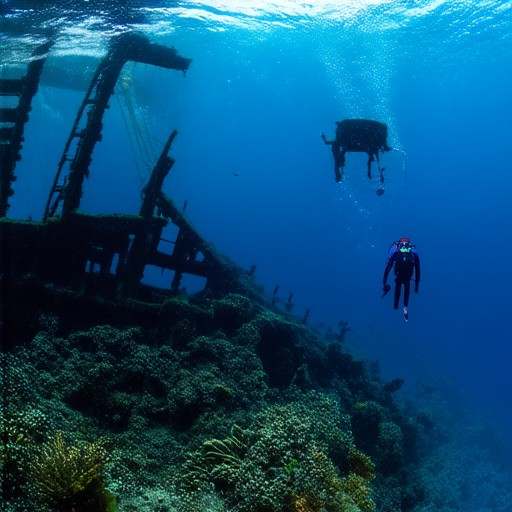
Best Tips for Capturing Stunning Underwater and Ocean Adventure Photographs
- Lighting is Key: Utilize natural light filtered through water, which can be challenging. Consider using external strobes or ring lights to enhance colors and details. Golden hours (sunrise/sunset) provide softer, more directional light.
- Composition Matters: Practice leading lines and the rule of thirds to create visually appealing shots. Look for unique angles, such as capturing schools of fish or ships in the distance, to add depth and interest.
- Equipment Setup: Invest in a high-quality underwater housing for your camera. Use a wide-angle lens to capture more of the scene, including vibrant coral reefs and marine life.
- Timing is Everything: Shoot during moments when light is optimal, such as golden hours, to avoid harsh shadows and reflections on the water surface. Be patient and wait for the perfect moment to frame your subject.
- Focus on Dynamic Subjects: Capture fast-moving subjects like schools of fish or diving creatures. Practice macro photography for intricate details, such as tiny marine organisms.
- Post-Processing Enhancements: Edit your photos to adjust white balance, correct distortions, and boost colors. Remove unwanted objects and noise to reveal the true beauty of the scene.
- Safety First: Always dive with a buddy and stay within your comfort level. Respect local regulations and environmental guidelines to protect fragile ecosystems.
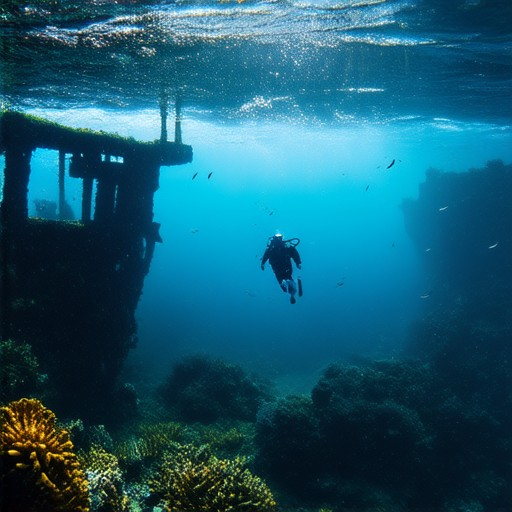
Best Tips for Capturing Stunning Underwater and Ocean Adventure Photographs
- Lighting is Key: Utilize natural light filtered through water, which can be challenging. Consider using external strobes or ring lights to enhance colors and details. Golden hours (sunrise/sunset) provide softer, more directional light.
- Composition Matters: Practice leading lines and the rule of thirds to create visually appealing shots. Look for unique angles, such as capturing schools of fish or ships in the distance, to add depth and interest.
- Equipment Setup: Invest in a high-quality underwater housing for your camera. Use a wide-angle lens to capture more of the scene, including vibrant coral reefs and marine life.
- Timing is Everything: Shoot during moments when light is optimal, such as golden hours, to avoid harsh shadows and reflections on the water surface. Be patient and wait for the perfect moment to frame your subject.
- Focus on Dynamic Subjects: Capture fast-moving subjects like schools of fish or diving creatures. Practice macro photography for intricate details, such as tiny marine organisms.
- Post-Processing Enhancements: Edit your photos to adjust white balance, correct distortions, and boost colors. Remove unwanted objects and noise to reveal the true beauty of the scene.
- Safety First: Always dive with a buddy and stay within your comfort level. Respect local regulations and environmental guidelines to protect fragile ecosystems.
What Are the Best Tips for Capturing Stunning Ocean Adventure Photographs?
To capture stunning ocean adventure photographs, consider the following proven strategies:
- Timing is Key : Plan your shoots around sunrise or sunset when the light is soft and dramatic, creating beautiful silhouettes and vibrant colors. Midday light can cause harsh shadows, so avoid it unless you’re aiming for high contrast.
- Composition Matters : Use leading lines, framing, and symmetry to guide the eye toward your subject. Experiment with perspectives like low angles for a stronger connection to the horizon.
- Aperture Priority : Shoot in manual or aperture priority mode to control depth of field. A narrow depth of field isolates your subject, emphasizing its importance while blurred backgrounds add a sense of motion and distance.
- Polarizing Filters : Utilize polarizing filters to reduce glare and enhance color saturation, especially during midday. They help in creating more dynamic and colorful skies.
- Long Exposures for Movement : Capture the movement of waves by using long exposures. This technique freezes the motion of the water, creating smooth textures and adding a serene feel to your photos.
- Explore Unique Angles : Don’t stick to the usual eye level. Get low to the ground for dramatic wave patterns or high vantage points to emphasize the vastness of the ocean.
- Consider the Environment : Respect the environment and wildlife. Avoid disturbing animals and clean up after yourself. Many locations require permits, so ensure you comply with local regulations.
- Post-Processing Enhancements : Use editing software to adjust colors, remove unwanted objects, and fine-tune exposure. Tools like GIMP or Adobe Photoshop can help you achieve the perfect look.
- Stay Patient and Observant : Sometimes the best shots happen when you’re patient and willing to wait for the right moment. Watch the light, tides, and weather conditions closely.
- Join Communities : Connect with fellow photography enthusiasts through platforms like Sailing Photo Awards to share tips, get feedback, and discover new opportunities.
By combining these techniques and staying observant, you can create ocean adventure photographs that truly stand out. Remember to always respect the environment and the creatures you encounter while exploring the beauty of our oceans.

What Are the Best Tips for Capturing Stunning Ocean and Underwater Adventure Photographs?
To capture the essence of the open sea and its hidden wonders, here are expert tips tailored for those eager to perfect their ocean and underwater photography:
- Master Lighting and Composition:** Understand how light interacts with water, creating dramatic effects like sunken rays or shimmering surfaces. Use natural light to highlight textures and colors. Experiment with angles to frame your subject, whether it’s a schools of fish or a distant island horizon.
- Choose the Right Gear:** Invest in a sturdy tripod for stability, especially in rough conditions. Use a waterproof camera housing to protect your equipment. Consider using a wide-angle lens to capture the vastness of the ocean and a telephoto lens for close-ups of marine life.
- Timing Is Everything:** Plan your shoots around sunrise or sunset for magical golden hour lighting. For underwater shots, seek calm waters during midday when sunlight penetration is optimal. Avoid harsh shadows by shooting away from noon sun.
- Understand Marine Life Behavior:** Observe the habits of fish and other creatures. Wait for the perfect moment when a seal pops out of the water or a turtle emerges. Patience and observation are key to capturing unique moments.
- Explore Hidden Gems:** Don’t limit yourself to popular spots. Discover lesser-known dive locations where the ecosystem remains untouched, offering rare and unique photo opportunities. Research local dive operators for guided tours led by experienced photographers.
- Edit Your Photos Thoughtfully:** Post-process your images to enhance color balance and contrast. Adjust exposure and saturation to bring out details in the ocean’s blues and greens. Remove distractions like reflections or unwanted objects from your frame.
By combining technical skills with patience and a keen eye for detail, you can create ocean and underwater photographs that truly capture the spirit of adventure and the natural beauty of our planet.
Ready to take your photography to new depths? Explore more tips and inspiration on our Ocean Photography Guide and discover how to turn your marine adventures into unforgettable visual stories.
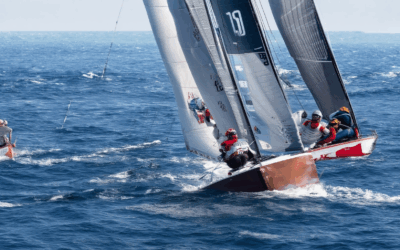
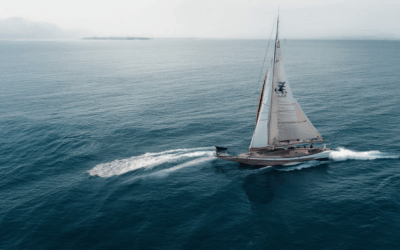
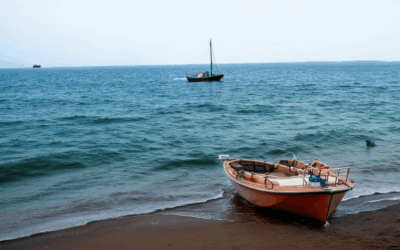
0 Comments